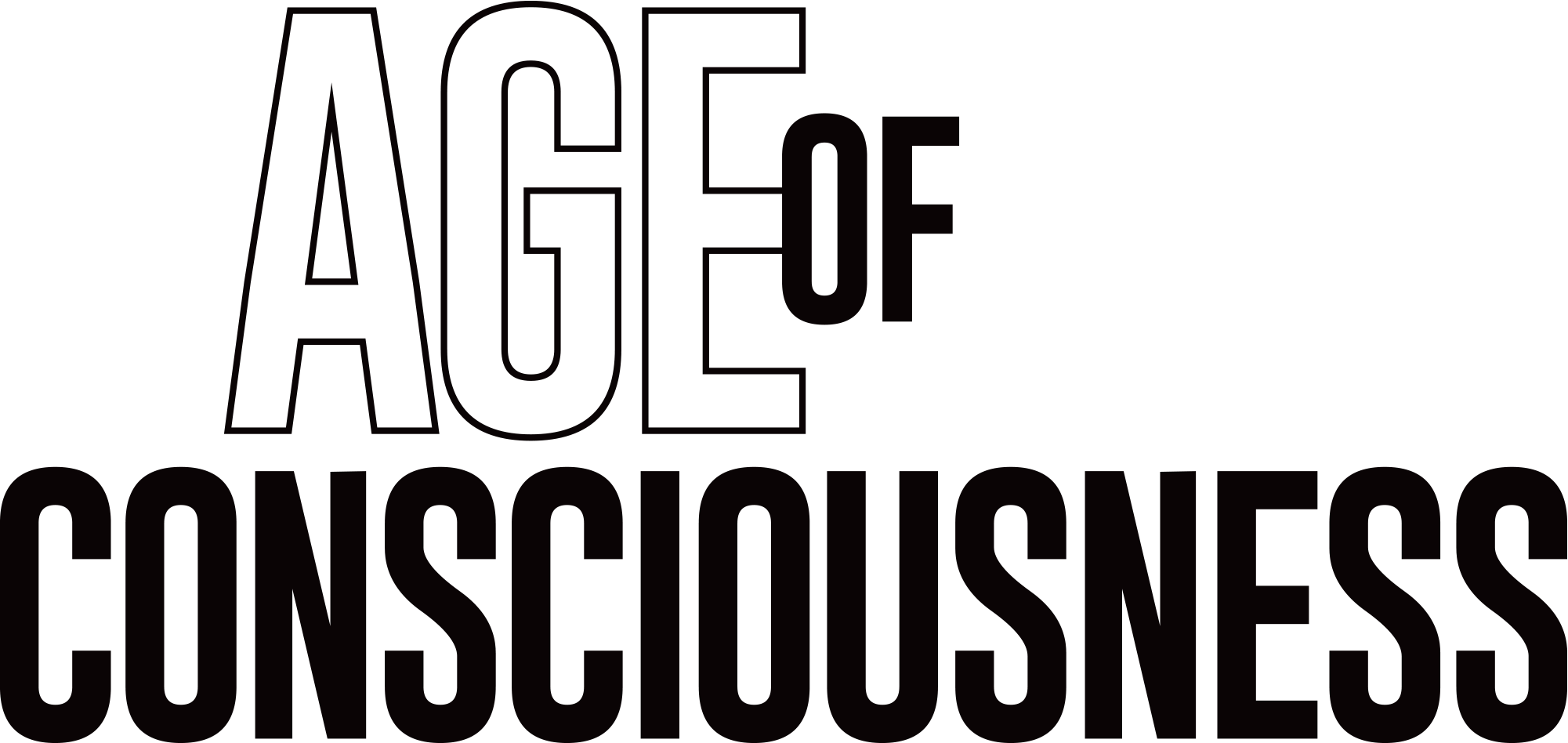
n the early 1950s, Louisville, Kentucky, resident George Devol laid the foundation for the modern robotics industry when he invented the first programmable industrial robotic arm. It was installed at a General Motors plant in Ewing, New Jersey, to lift and stack hot metal parts. The robotic arm weighed 4,000 lbs. and cost $25,000. Devol’s manufacturing partner, Joseph Engelberger, found marketing the new technology to be difficult, citing opposition from U.S. labor unions and industrialists.

Productive Robotics’ teach-by-touch cobot OB7 picks up ABACORP parts from a bench and loads them into a CNC machine tool for processing.
The use of robots in U.S. manufacturing applications stalled. Conversely, the notion of a sophisticated artificial intelligence gained traction with movies and TV. In 1956, MGM’s ground-breaking film “Forbidden Planet” introduced Robby the Robot. The 7-ft.-tall domestic helper could speak 187 languages and sew, cook and clean. A decade later, a B-9 Class M-3 General Utility Non-Theorizing Environmental Control Robot appeared in the 1965 television series “Lost in Space.” Equipped with futuristic weaponry and beyond-human strength, the robot also exhibited human traits and emotions that made him an important member of the Robinson family.
The idea of a robot as both protector and friend paved the way for sentient beings like C-3PO and R2D2 in the iconic Star Wars franchise. Enter stage left: Zac Bogart. “I was a 19-year-old technician working on the first Star Wars movie during the day and Close Encounters of the Third Kind at night,” he says. At 23, Bogart established ZBE Inc. in 1980 to design and implement special-effects camera and motion control systems for image-rich movies. Bogart’s robotic camera systems were used on animated short films, television commercials and full-length feature films that included “The Right Stuff,” “The Twilight Zone” and “Top Gun.”
In 1985, he pivoted away from motion pictures to develop and produce award-winning Chromira digital printing solutions for professional, consumer and commercial imaging applications.
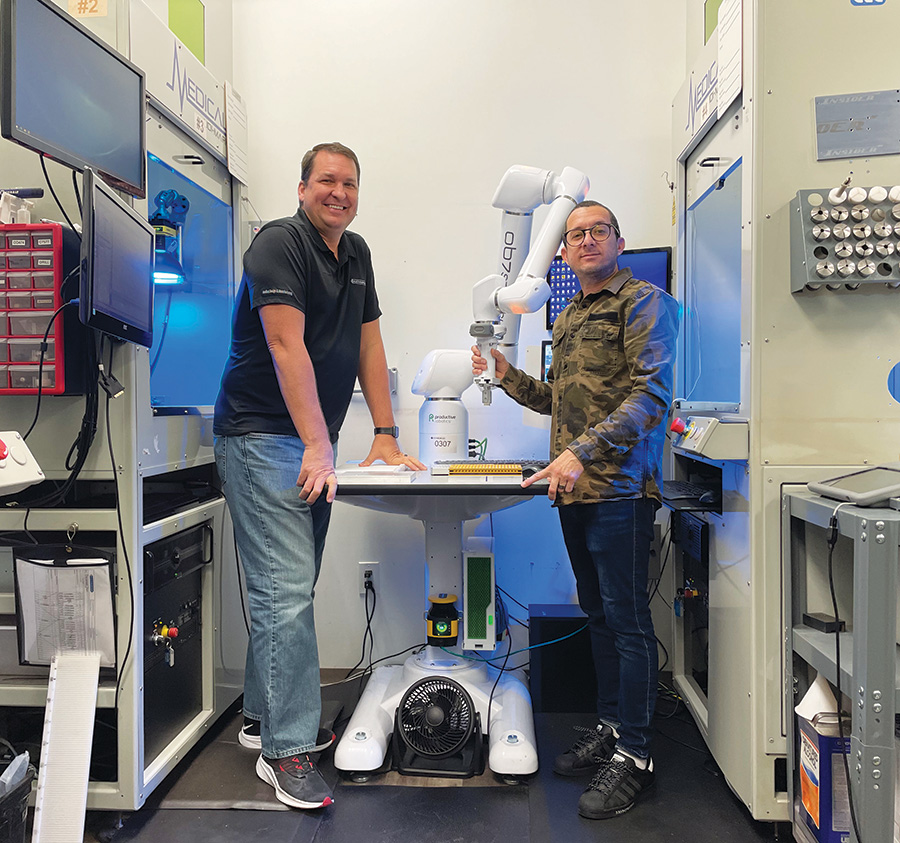
The timing was ripe. The 21st century’s first decade produced breakthroughs in light weighting, payload capacity, reach, speed and multi-axis synchronization. Collaborative robots were introduced in 2013.
“The big promise that came with the introduction of collaborative robots was that they were simpler to program, anyone could learn to do it and they were safe enough to put anywhere on the shop floor,” says Bogart. “But the truth is, you still needed an engineer to implement them. We wanted to do something different.”
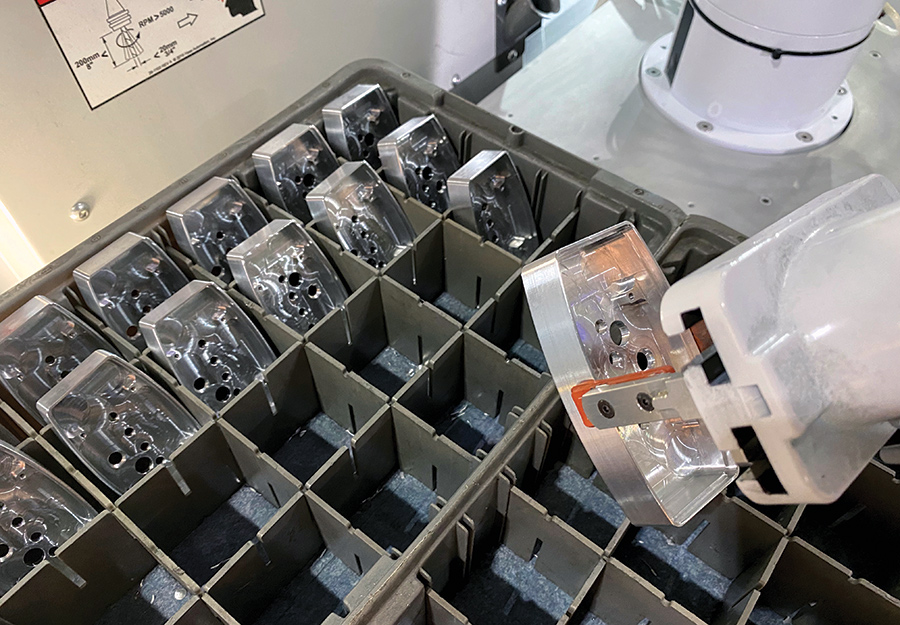
“Our approach was to eliminate programming language,” says Bogart. “An operator simply has to show the OB7 what to do by walking it through the steps of a process.” The cobot’s “teach-by-touch” design allows it to learn a job in a matter of minutes. The OB7 can work with new or legacy equipment from a CNC machine to a press brake or take on a task like material handling.
The “secret sauce” is Productive Robotics’ software, says Bogart. “We analyze the steps a job requires and program the cobot to a customer’s specifications. We also use a special gearing system that we designed. No other cobot on the market uses it. We wanted the OB7’s movements to be organic, natural. The takeaway is that you don’t have to be a programmer. You just need to know how to do the job. If you know the job, you can teach the cobot.”
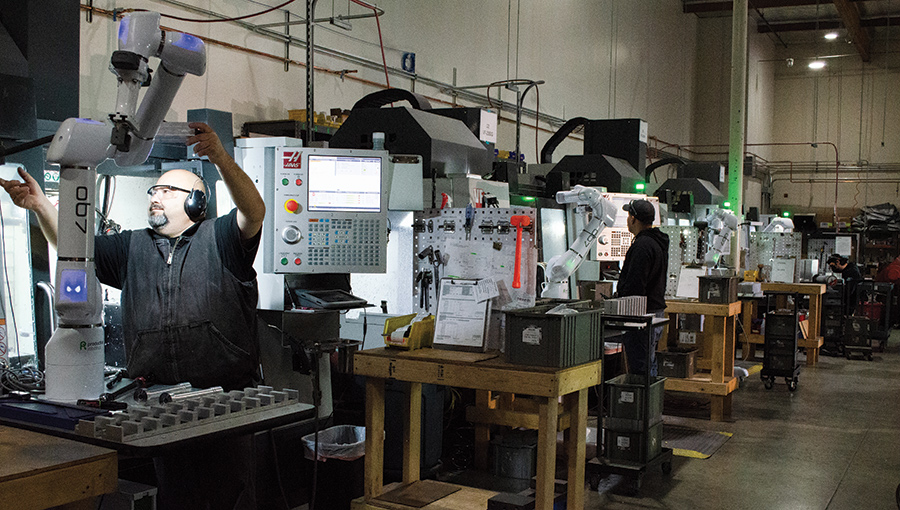
Like Bogart, COO Rob Frankel entered the workforce at a young age. “I was 15, riding my bicycle and knocking on doors, looking for a job. A machine shop responded,” he recalls.
The work fit Frankel like a glove. He began honing other skills like welding and fabrication before eventually taking a job at Haas Automation, where he ran its application engineering department. As Frankel gained experience, he found he was hard-wired for the industry and began to think about running his own manufacturing company.
“Someone told me that if you ever want to buy equipment, putting a CNC machine in your hands is like printing money,” he says. “That got the ball rolling. Kim and I talked and decided to start ABACORP” in 1997 in Moorpark, California.
 The OB7 isn’t just a dummy pick-and-place robot. It gives us analytical data about each part.
The OB7 isn’t just a dummy pick-and-place robot. It gives us analytical data about each part. 
“When I saw robotics hit a price point that fit our budget, I decided to jump in and take advantage of the technology,” says Rob Frankel. “We were drawn to Productive Robotics because their cobots were locally built.”
The job shop installed its first two OB7 cobots in 2018. Today ABACORP has six OB7 cobots tending machines, loading and unloading parts.
In 2021, growth prompted ABACORP to move to a larger facility, expanding by 7,500 sq. ft. The job shop manages small to large production run orders. Each cobot picks up parts from a bench, loads and unloads them from a CNC machine tool and places them in a box. An operator inspects part features.
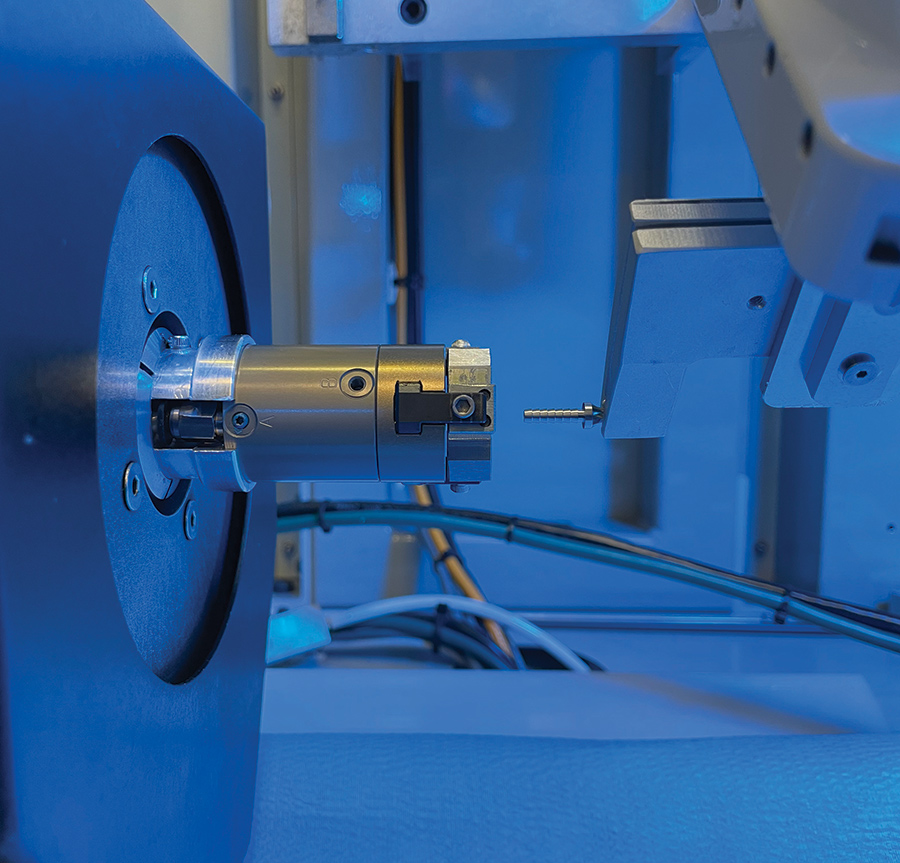
Once the OB7 is taught what to do, the job is saved. “A two-hour setup job with the cobot can be reduced to 15 minutes on repeat jobs,” Frankel adds. “It already knows what to do. Even if you are only running 30 parts, you can boost throughput with the cobot.”
The AI “co-workers” are also helping create a healthier work environment. “Shop floor processes are repetitive by nature,” says Frankel. “People end up with wrist and finger conditions. I’ve run millions of parts myself.”
Frankel noted that contract shops using other cobot model brands on the market, have expressed surprise at ABACORP’s success with OB7. “One individual confided they had only used their robot a couple of times but experienced failure,” he says. “We didn’t have that problem. Productive Robotics helped us understand how to integrate the OB7 into our workflow.”
Productive Robotics’ teach-by-touch cobots and support services also caught the attention of Lenkbar LLC. Based in Naples, Florida, Lenkbar was founded in 2012 as a design company. In 2017, President and CEO Erik Papenfuss took Lenkbar into the medical space as a contract manufacturer with the goal to develop, design and produce surgical devices and implants that simplify surgery for physicians. The orthopedic device specialist manufactures precision medical devices to 0.0001 tolerances. All equipment must adhere to stringent ISO-13485, FDA, OSHA and EPA standards. Products include medical drills, trocars, aspiration devices, orthopedic instrumentation and implants.
“We produce thousands and thousands of products per day because most of these tools are single-use disposable devices,” says Jay Clairain, director of quality and new product development for Lenkbar. “Final inspection was a manual process that employees performed using microscopes. It’s time-consuming when you have 2,000 or 3,000 parts in a single lot.”
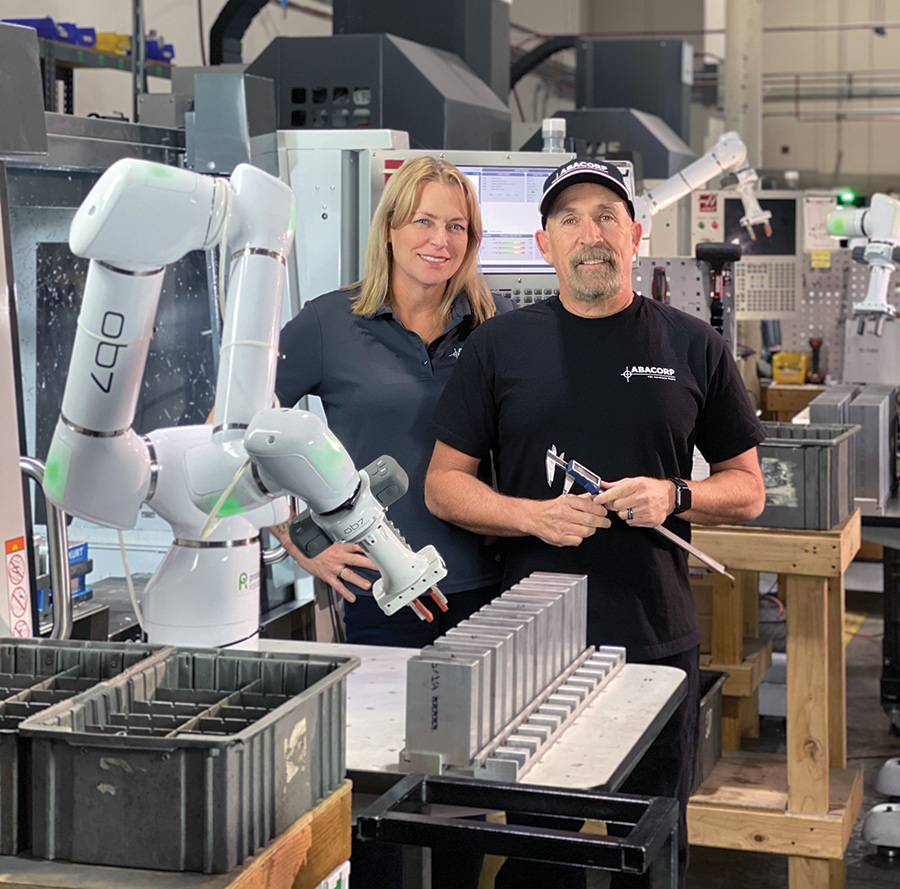
In May 2021 Lenkbar installed an OB7 Stretch cobot and a Cognex D900 Vision System. “Productive Robotics was willing to partner with us,” Clairain says. “We said, ‘Give us a robot that will work and we’ll figure out the rest.’”
The rest, according to Lenkbar Quality Control Manager and Automation Engineer Rainer Abello, included developing programming for the laser engraving machines the OB7 would feed parts to. Abello started with a medical drill ¼ in. long and 0.04 in. in diameter.
“We are using the OB7 to insert parts into the laser marking equipment and then inspect parts for laser quality and correct information,” he says.
“We had a department of four people performing this operation,” Clairain says. “With the OB7, we’ve reduced the need for human interaction. Instead, we’ve moved those individuals to other areas, retrained them and taught them higher value-added skill sets.”
Positioned between two laser engraving machines, the cobot is able to run parts on both lasers at the same time.
“We’re currently processing 15 different part numbers but we expect to add another 40 or 50 more,” says Clairain.
The OB7 can initiate a time delay or the laser engraver will signal when it finishes a cycle. The cobot then takes the part and presents it to the vision system. In addition to a pass/fail, other variables like which pallet grid the part was pulled from are recorded and saved.
“We only accept quality inspection scores of 95 percent or higher,” says Abello. “If you are consistently running bad parts, you can identify which grid location they are from. The OB7 isn’t just a dummy pick-and-place robot. It gives us analytical data about each part.”
The cobot has helped Lenkbar recoup cycle time. “We found there was a lot of wasted time with operators,” continues Abello. “They get distracted, take breaks, go to lunch. The cobot doesn’t need to stop for any of those things. The laser engraving machines are running lights out six days a week for at least 20 hours. We’re looking at sourcing an automatic feeder that can hold 10,000 parts at a time.”
Each of the OB7’s joints can rotate 360 degrees in both directions. The cobot can sense collisions at every joint, a function that triggers a safety stop. The OB7 can also be stopped with an operator’s hand and restarted with a tap on one of its joints. When running at collaborative speeds, guarding is not required. For high-speed operations, a laser safety scanner is available.
“The cobot’s dexterity and the laser safety scanner are really nice features,” says Clairain. “It gives us access to the area without the need for guarding or fencing. The laser safety scanner can be configured to have specific “keep-out zones” and if an operator enters that defined area, the robot immediately stops until the operator clears that area.”
Abello determines the parameters so that operators can safely perform tasks in proximity to the cell. Abello’s experience with the initial application has opened the door to other teach-by-touch opportunities. He has taught the cobot how much pressure it can apply when handling cosmetic parts, for example. Because the OB7 can sense pressure, Abello has plans to teach it to take over a manual buffing operation.
“This was our proof of concept,” says Clairain. “It was our first step into the robotic realm, and it has opened the eyes of management to the potential of these cobots. The advantages we’ve experienced already are substantial—the applications unlimited.”